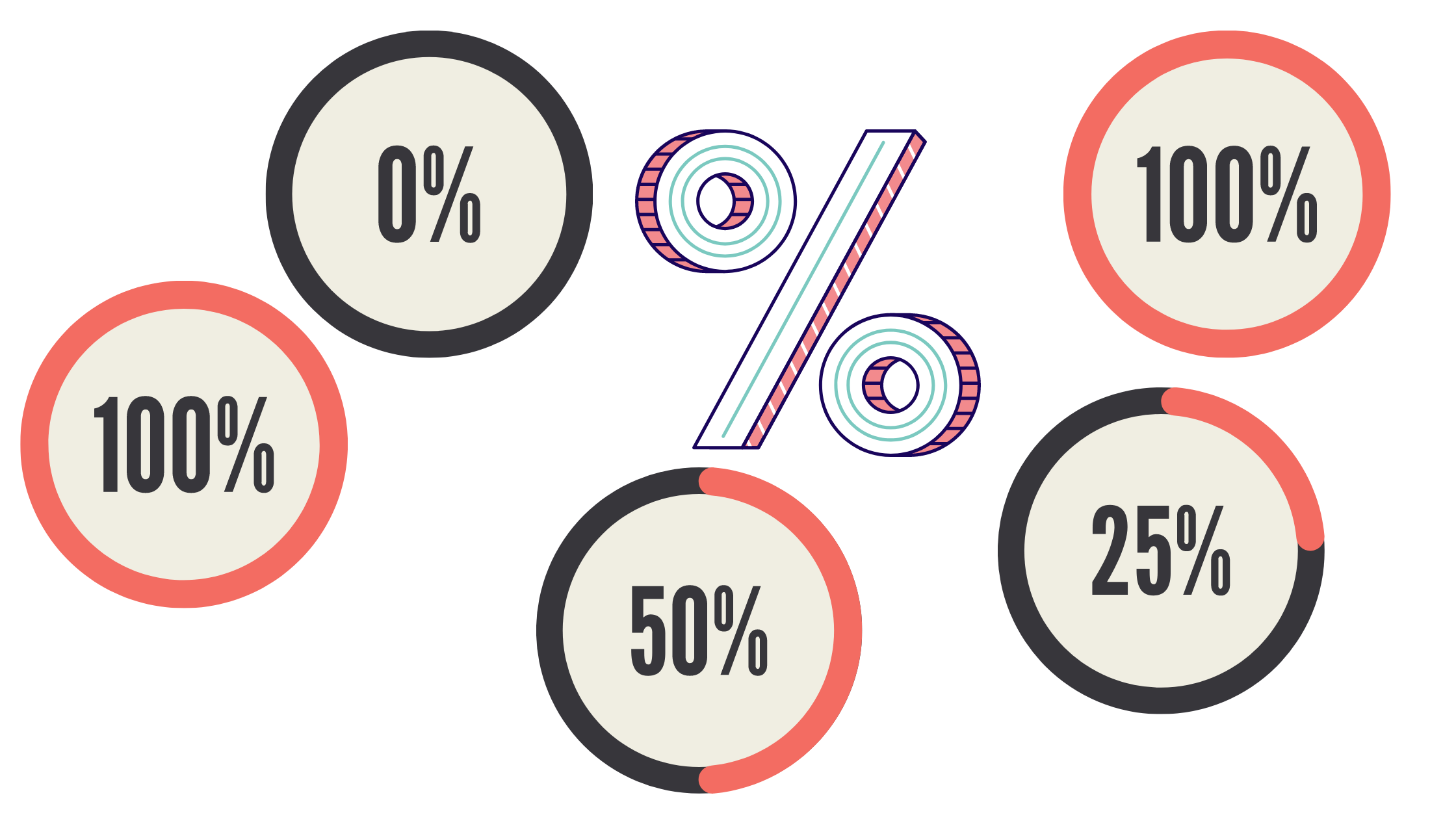In mathematics, a ratio or fraction which has the value of 100 as a whole is defined as a percentage. It can also be defined as the fraction where 100 is on the denominator part and is denoted by the help of a symbol %. This term percentage has been derived from Latin words which basically signifies ‘by hundred’. Let us assume that you ate 3 slices of pizza out of 4. The percentage of pizza that you ate is equal to 75 percent or you scored 40 marks out of 100 in your examination, the total percentage scored is = 40 percent. In this article, we will try to cover some basic concepts regarding percentage such as points to remember, what do you mean by percentage increase and percentage decrease, and do a detailed analysis about them.
Some Important Notes to remember about Percentage
As mentioned above, percentage can be defined as the fraction or a ratio where the resultant value of the whole is equivalent to 100. In the next few points, we will try to sum up some significant properties or points to be noted about the percentage.
-
In order to calculate the percentage of a number that is whole, you may find the value of 1 percent and then use the arithmetic operation of multiplication to multiply it by the percent mentioned to get the answer.
-
The increment or increase and decrement or decrease of any given quantity can be defined or represented as a percentage.
-
The fraction of any two numbers can be converted to percentages and similarly, the percentages can be converted to fractions. For example, the fraction of 0.35 percent is = 35/100 or 7/20. Likewise, the percentage of the 7/20 fraction is = 0.35 percent.
-
The resultant values that we get in percentage are sometimes reversible. Let us take an example to verify the statement mentioned above, 25 percent of the number 40 is equivalent to 40 percent of 25; 10 = 10. Therefore, it is verified that the percentages of the two numbers are reversible.
What Do You Mean by Percentage Increase and Percentage Decrease?
The percentage increase can be defined as the value of any quantity which increases over a period of time. Some examples of percentage increase are as follows; the increase in the population of human beings or growth of bacterias. The formula given to calculate the percentage increase is given by the increased value subtracted by the original value divided by the original value and then multiplied by 100. Mathematically, ( Value increased – The original Value ) / Original value * 100. The percentage decrease can be defined as the decrease in population over time. Some examples of percentage decrease are as follows; decrement in the number of covid patients, decrease in the intensity of rainfall, and so on. The formula given to calculate the percentage decrease is given by the original value subtracted by the decreased value divided by the original value and then multiplied by 100 or ( The original value – value decreased ) / original value * 100.
Finding Math Confusing? Take Online Math Classes
If there is one subject from which students run the most, it is math. Many of them find the subject confusing and tough. If you also are facing the same problem, do not worry. Learn online math classes from the best teachers on the platform of Cuemath. These classes are conducted life which ensures that students interact with teachers and ask their doubts. Teachers focus on the conceptual clarity of students by making them practice math with the help of math puzzles, math games, and math worksheets. If you want to excel in the subject, visit Cuemath’s website to book a free session.


